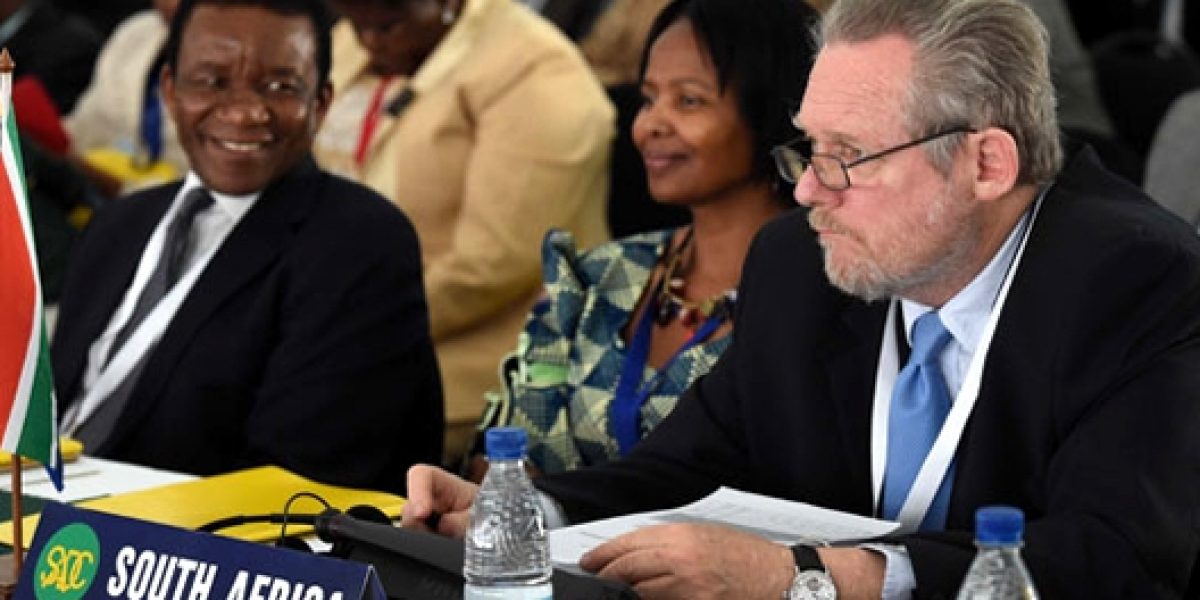Their host is President Robert Mugabe who is taking on the role of chairman of SADC for the next year, from the Malawian president. SADC is traditionally an organisation that has seen its agenda dominated by political and security concerns.
In these areas the last year has been relatively quiet.
Zimbabwe was taken off the SADC watch list following the elections in July 2013 that saw Zanu-PF return to power again and the end of the government of national unity. While some tensions remain in the DRC and Mozambique, these have not required regional intervention or much attention at SADC level. Many countries in southern Africa have elections taking place this year (including South Africa, Malawi, Mozambique, Botswana and Namibia), but so far so good in terms of peaceful results.
So what are regional leaders discussing as they enjoy the view of one of the world’s natural wonders this weekend?
Without the distraction of high politics, their focus will likely return to the regional integration agenda of SADC.
This is the nuts and bolts work of any regional organisation. It includes facilitating the movement of goods, services, people and capital among member states, so as to boost economic development of the group as a whole.
SADC adopted a road map for its integration in 2003, which is known as the Regional Indicative Strategic Development Plan (RISDP). This document set out targets for achieving deeper levels of economic integration such as a free trade area, customs union, common market and monetary union. The approach is largely based on that used by the EU for its own integration and it has been widely adopted by other regional blocs in Africa.
SADC did manage to launch the Free Trade Area (FTA) in 2008 with the participation of most member states, with the notable exceptions of Angola and the DRC. The FTA saw tariffs reduced on many of the goods traded within SADC and this is an achievement worth commending. There have also been positive steps taken towards integration in other areas, such as the establishment of a common payment system that operates among the central banks in southern Africa.
However, the targets set out in the RISDP that deepen integration beyond the FTA are proving elusive for SADC.
This year’s summit is providing an opportunity for the heads of state and government to update and review the integration agenda as they consider a new iteration of the RISDP. They should be thinking carefully about whether the model conceived at the beginning of this century is still the right one for southern Africa. Member states should not continue to simply sign up to unrealistic milestones because it is the commonly accepted wisdom on how to integrate.
SADC is not the EU. There are specific, unique dynamics and conditions that exist in the region, which need to be factored into any integration model which is going to be effective.
A revised RISDP has the chance to reflect the integration that is already happening on the ground in SADC. It should look not only at the legal structures needed, but consider the best ways to address the practical blockages occurring on a daily basis in the region.
For example, if the FTA is to become a reality then the removal of tariffs needs to be accompanied by steps to reduce behind the border measures. Standards should be harmonised at a regional level so that the road worthiness certificate of a Zimbabwean tanker is recognised in Zambia without incurring any additional costs or administrative burden. Urgent steps should be taken to enhance the capacity of the border post at Beitbridge to handle the hundreds of trucks that pass through there every month in only one lane of traffic. People doing business in the region should be able to move freely with long-term visas or travel passes that encourage trade between neighbours.
To progress these practical integration initiatives, there are two things our leaders could do at the SADC Summit.
First they could clearly demonstrate that they are approaching this new phase of SADC’s integration from a starting point that seeks to facilitate the movement of economic factors in the region.
All too often there is a message from the top that security concerns in the region are given primacy over everything else. Security is undeniably important, but if we are to make economic integration a reality, then facilitation should come first, with exceptions made for security reasons where necessary. The integration policy of SADC needs to be developed with the close involvement of the private sector, so that it encourages economic activity rather than hampers it.
The second thing SADC leaders could do is to only sign commitments that they are prepared to implement.
All too often regional meetings end with lots of nice declarations and statements that are forgotten as soon as the government delegations return to the realities of their own countries. SADC has poor compliance mechanisms and there is a history of limited accountability by leaders for the implementation of regional agreements.
To move from rhetoric around the importance of regional integration for Africa, to seeing the results, then clear signals from the top that they are prepared to facilitate the process, work with business and keep their words, are needed.








